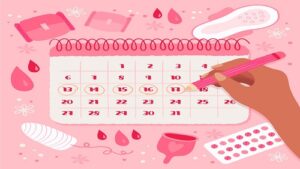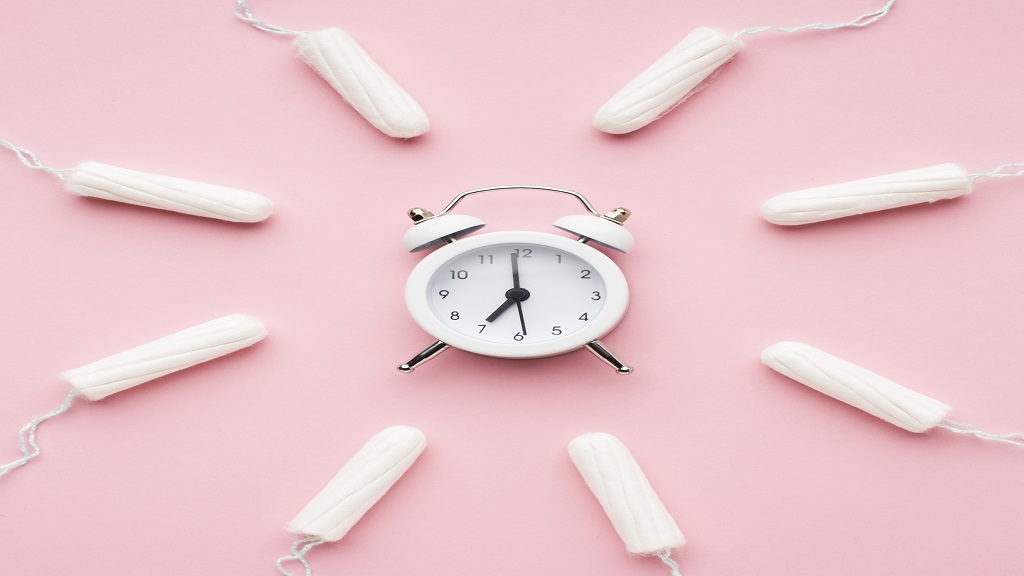The menstrual cycle: Everything you need to know
The menstrual cycle is a natural process that happens in women every month. It’s a time when the body changes and becomes more sensitive to hormones. This blog post is designed to provide you with everything you need to know about the menstrual cycle, including the different stages, what happens during each stage, the benefits of each stage, and more.
By reading this post, you’ll be able to have a better understanding of your body and will be able to make better decisions about your health and well-being. So whether you’re a first-time menstruator or you’re just curious about what’s going on inside you, read on to learn everything you need to know about the menstrual cycle.
What is the menstrual cycle?
The menstrual cycle is the natural process that happens every month in women as a result of the hormonal changes that occur during the month.
The menstrual cycle is divided into two parts: the follicular phase and the luteal phase.
During the follicular phase, the eggs are released from the ovaries. These eggs are then collected by the fallopian tubes and transported to the uterus. The uterus then nourishes the eggs and the process of fertilization takes place.
The fertilized eggs will then implant in the uterine wall and will grow into a baby.
During the luteal phase, the body produces the hormone progesterone. This hormone keeps the uterus in a state of readiness for a new pregnancy.
The menstrual cycle normally lasts around 28 days. However, it can vary from woman to woman.
The stages of the menstrual cycle
1. Follicular stage: This is the stage when the egg is released from the ovaries.
2. Ovarian stage: This is when the egg is fertilized by the sperm.
3. Luteal stage: This is when the egg is developed and the hormones that will make the woman pregnant are produced.
4. Menstrual phase: This is the time when the menstrual cycle occurs.
5. Post-menopausal stage: This is the stage after a woman has had her last period.
6. Premenstrual phase: This is the stage before a woman’s next period.
The menstrual cycle: What to expect
Most women will go through their menstrual cycle over the course of about 28 days. The average cycle consists of two phases: the follicular phase and the luteal phase. The follicular phase is when the egg is released from the ovary. The luteal phase is when the egg is fertilized by the sperm and becomes a fetus.
During the follicular phase, you might experience some of the following: bloating, cramps, mood swings, breast tenderness, and headaches. The luteal phase is when you’ll experience: PMS symptoms (such as cramps, mood swings, breast tenderness, and headaches), fertility symptoms (such as acne, breast tenderness, and irregular bleeding), and post-partum symptoms (such as feeling exhausted and having a lot of milk production).
What to do if you have spotting or bleeding during the menstrual cycle
If you’re experiencing spotting or bleeding during your menstrual cycle, it’s important to know what to do. Here are some tips:
If you’re experiencing spotting, try to remember when the bleeding started and try to pinpoint the time of the day or night it occurred. This will help you figure out the best time to take a pregnancy test.
If you’re experiencing bleeding that’s heavier than a flow and lasts for more than two weeks, it’s important to see a doctor. Spotting and bleeding during your menstrual cycle can be a sign of anemia.
If you’re experiencing spotting or bleeding that’s severe and lasts more than three days, it’s important to see a doctor. Severe spotting or bleeding during your menstrual cycle can be a sign of a more serious health problem.
How to avoid getting pregnant during the menstrual cycle
The menstrual cycle is something that all women experience at some point in their lives. However, some people are still not aware of all the different aspects of it. In this article, we are going to be discussing everything you need to know about the menstrual cycle, so you can have a better understanding of what is happening to you.
The menstrual cycle is a natural process that happens every month. It begins with the follicle growing and preparing for ovulation. This process starts around the time of your period and lasts for around 21 days. Ovulation usually happens around day 14-16 of your cycle. After ovulation, the egg is released and travels down the fallopian tube to the uterus. If the egg is fertilized, it will become a fertilized egg and implant in the uterus. If the egg is not fertilized, it will pass out of the body.

How to deal with cramps during the menstrual cycle
There are a few things you can do to help deal with cramps during the menstrual cycle. Firstly, make sure you’re drinking plenty of fluids. This will help to alleviate the feeling of being thirsty and will help to flush out any toxins that may be causing the cramps. Secondly, take ibuprofen (or another painkiller) if the cramps are really bad. Finally, try to relax and take deep breaths.
This will help to clear your mind and ease the pain.
How to deal with PMS symptoms during the menstrual cycle
There are a lot of myths surrounding the menstrual cycle and PMS, so it’s important to be well-informed if you want to have a good experience. Here are the basics:
The menstrual cycle is a reproductive process that occurs every month.
The average menstrual cycle is about 28 days long, but it can vary from woman to woman.
There are three phases during the menstrual cycle: the proliferative phase, the secretory phase, and the menstrual phase.
The proliferative phase is the first phase and it lasts about 5 days. The main purpose of this phase is to increase the number of follicles in the uterus.
The secretory phase is the second phase and it lasts about 10 days. During this phase, the estrogen levels increase and this is when the uterine lining is prepared for ovulation.
The menstrual phase is the third and final phase and it lasts about 7 days. During this phase, the estrogen levels drop and this is when the menstrual blood flow starts.
There are various symptoms that can occur during the menstrual cycle, but most of them are mild and can be managed with medication or lifestyle changes.
If you’re experiencing severe symptoms that don’t seem to go away, you should see a doctor.
What to do if your period is late
If your period is late, there are a few things you can do. First, you can take a pregnancy test to rule out pregnancy.
If you have a problem with your menstrual cycle, you’ll need to see a doctor. Problems with the menstrual cycle can include problems with your ovaries, problems with your uterus, problems with your fallopian tubes, or problems with your vagina.
How to deal with PMS symptoms if you don’t have a menstrual cycle
If you don’t have a menstrual cycle, you might be wondering what to do about PMS symptoms. Here’s everything you need to know.
PMS is a time of the month where women experience a range of symptoms, such as mood swings, bloating, and cramps. The symptoms can be really unpleasant, but they usually pass after about a week.
If you’re experiencing PMS symptoms and you don’t have a menstrual cycle, there are a few things you can do to ease the symptoms. You can take hot baths, drink lots of fluids, eat light foods, and take ibuprofen or paracetamol. You can also talk to your doctor about other treatments, such as hormone therapy or birth control pills.
What to do if you have problems
If you experience problems during your menstrual cycle, don’t worry. Here are some tips to help you out.
If you’re having cramps, the best thing to do is try to relax and take some ibuprofen or acetaminophen.
If you’re experiencing spotting or a discharge, it may be a good idea to talk to your doctor. It could be that you have an infection and need antibiotics.
If you’re having a lot of pain, you might want to talk to your doctor about an abortion.
What to do if you have questions
The egg is fertilized by the sperm and, after nine to twelve days, the embryo begins to grow. The embryo is then pushed out of the uterus and into the vagina.
After the embryo is expelled, your body begins to prepare for the next cycle.
What to do if you want to stop having periods
If you’re one of the lucky ladies who never experiences any pain during or after your period, congratulations! However, for the majority of women, periods can be a pain in the butt. Here are a few tips to help make them a little more bearable.
First and foremost, make sure you’re getting enough nutrients. This means eating a balanced diet and taking supplements if you’re deficient. If you’re not getting enough calcium, for example, you may experience cramps and other PMS-related symptoms.
Next, make sure you’re hydrated. Drink lots of water, herbal teas, or fruit juices throughout the day to keep your muscles and organs functioning correctly.
If you’re experiencing pain in your lower abdomen, it’s important to see your doctor. This could be a sign that you have an infection or that you’re not getting enough calcium.
——————————

